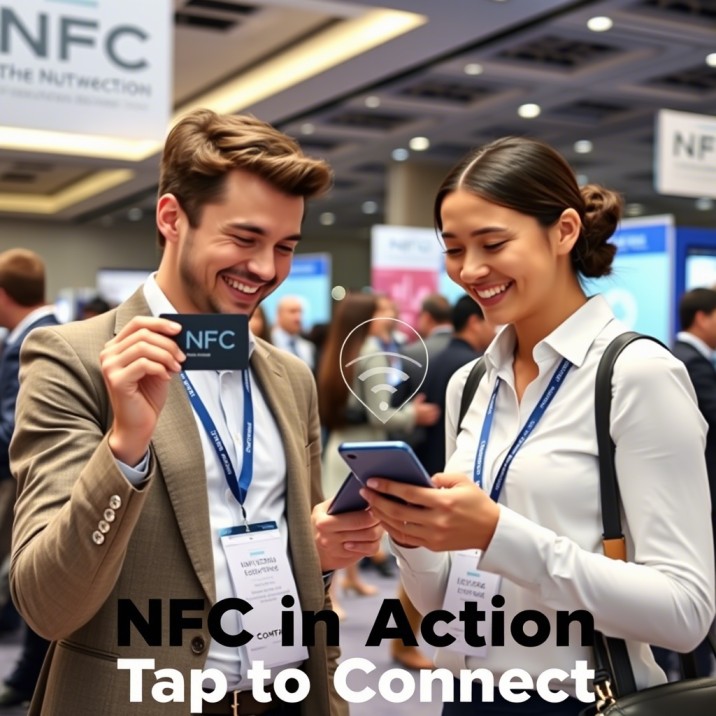🔍 Introduction: A Tap That Changed Everything
It was a rainy Monday when Kiran, a tech consultant at a networking conference, pulled out a sleek black card from his wallet. With a simple tap on a fellow attendee's phone, his LinkedIn, website, and contact details popped up instantly. No awkward typing. No fumbling with QR codes. Just one tap.
That’s not a sci-fi scene that’s NFC technology in action.
Near Field Communication (NFC) has quietly but powerfully evolved from just enabling payments to becoming a game-changer in networking — personal, professional, and even machine-to-machine.
💡 What Exactly Is NFC?
NFC (Near Field Communication) is a short-range wireless technology that allows data exchange between devices when they are placed within a few centimeters of each other. You’ve probably used it while making a contactless payment. But that’s just scratching the surface.
What most people don’t realize is that NFC is also becoming a revolutionary enabler of human networking and smart business interactions.
🌐 The New-Age Networking Tool
Remember the era of business cards? Now imagine those cards being smart — updating themselves, tracking engagement, and even offering analytics.
That's where NFC-based digital cards come into play. Professionals are now using NFC cards, badges, and tags that can instantly transfer their portfolio, resume, website, or appointment scheduler with a single tap.
Think about it: No app installs. No waiting. Just instant human connection backed by tech.
Companies are also embedding NFC into event badges, conference lanyards, and visitor management systems, making interactions seamless and paperless.
📡 Beyond People: NFC in Network Device Pairing
It’s not just humans networking. NFC is also simplifying how devices network.
Let’s say you're setting up a wireless printer, speaker, or smart home hub. Instead of entering long passwords or configurations, just tap your phone to the device — and they’re paired. NFC-enabled routers and IoT devices are bringing “zero-effort networking” to real life.
In enterprise environments, NFC tags are being used for:
- Device authentication
- Network configuration on-the-go
- Controlled access to shared systems
🧠 Why NFC Works So Well for Networking
- Speed: Connect within milliseconds
- Simplicity: No manual pairing or data entry
- Security: One-to-one communication, often encrypted
- Convenience: Works without internet or Bluetooth
- Personalization: Can be linked to dynamic data
These features make NFC an ideal medium for human and device-level networking in our fast-paced, always-on world.
📊 Real Use-Cases: NFC in Action Today
- Job Fairs: Applicants tap their NFC-enabled ID to apply or share resumes
- Smart Offices: Employees tap their badge to connect to secure Wi-Fi networks
- Marketing Campaigns: NFC-embedded posters that lead to websites or offers
- Healthcare: Patient wristbands with NFC for secure record retrieval
- Retail: Staff log into systems or devices via NFC badges
🔮 The Future? Hyper-Personal Networking
With AI and NFC working together, we’re moving toward a future where networking becomes contextual and intelligent. Imagine walking into a room and your profile is auto-shared only with relevant people. Or devices that configure themselves just by presence.
In short, NFC is not just about contactless. It's about connection — human, secure, and fast.
We live in a world where first impressions happen in seconds, and networking is no longer limited to handshakes and printed cards.
With NFC, your digital self travels with you — ready to introduce, impress, and interact with just one tap.
So next time someone asks for your card, just smile, and say:
"Tap here."
